Dark spots on the face—whether they’re sun-induced, hormonal, or the result of past blemishes—are among the most common skin concerns for people of all ages and skin types. Achieving clear, even-toned skin is not an overnight process, and understanding how to treat dark spots on face requires both patience and a multipronged approach. If you’re hoping for quick fixes, it’s important to set realistic expectations: consistent effort and preventive strategies matter as much as the treatments themselves.
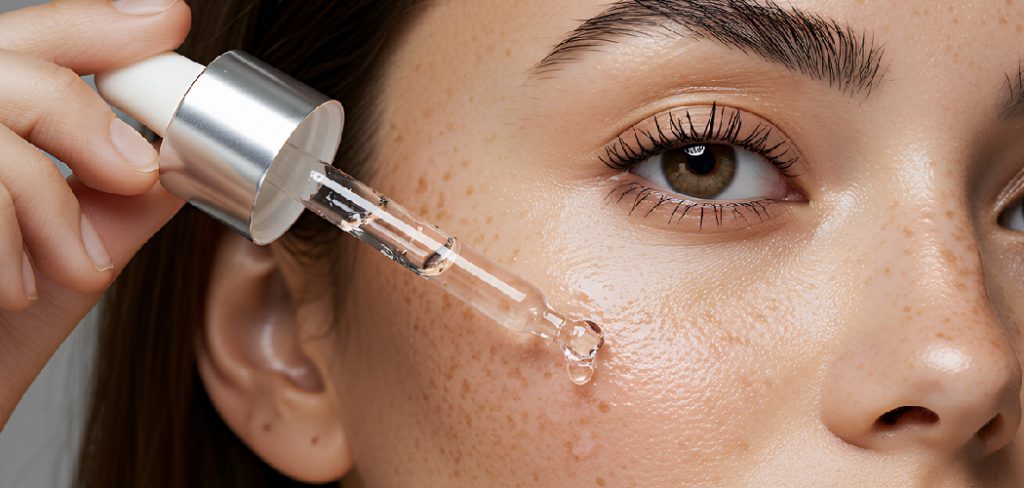
This comprehensive guide demystifies the journey toward clearer skin. You’ll learn about the most common pigmentation types, the science behind targeted actives, how to build and layer your skincare routine for best results, and when to seek professional intervention. We’ll walk you through the daily musts (like SPF!), provide step-by-step instructions for at-home care, break down how to cycle potent ingredients to minimize irritation, and explain in-office options for stubborn patches. Along the way, you’ll discover tips for managing plateaus, preventing setbacks, and keeping skin healthy long-term. Let’s start your path to addressing dark spots thoughtfully and effectively.
Pigmentation 101: Types and Causes
Before choosing the best method to treat dark spots, it’s vital to understand what’s causing them. Not all pigmentation is created equal; different triggers require tailored action. The most common types you’ll encounter include post-inflammatory hyperpigmentation, sun spots, and melasma.
Post-inflammatory Hyperpigmentation vs. Sun Spots
Post-inflammatory hyperpigmentation (PIH) develops when skin reacts to injury, inflammation, or trauma. For many, this means the lingering marks that follow acne breakouts, bug bites, or minor scrapes. PIH typically appears as flat, brown, or sometimes purple-tinged patches, and it’s more prevalent in deeper skin tones. Sun spots, also called solar lentigines or age spots, are directly tied to cumulative UV exposure. They manifest as well-defined, tan to dark brown spots—usually on the cheeks, forehead, and other sun-exposed areas. Unlike freckles, sun spots do not fade in winter and can multiply with ongoing sun exposure.
Melasma and Hormonal Influences
Melasma is another common, but often more stubborn, form of facial hyperpigmentation. Its hallmark is symmetrical brown or gray-brown patches, typically on the cheeks, upper lip, and forehead. Melasma is closely linked to hormonal shifts—think pregnancy (“the mask of pregnancy”), birth control pills, or hormone therapy. It often flares up with sun or heat exposure and may persist for years. Addressing melasma usually involves long-term management and a particularly diligent sun protection strategy.

When to See a Professional
While most dark spots respond to over-the-counter routines, some require professional assessment—especially if a spot changes rapidly, bleeds, or looks distinctly different from others. If in doubt, consult a dermatologist for an accurate diagnosis and tailored treatment.
Daily Non-Negotiable: Broad-Spectrum SPF
If you do only one thing to treat and prevent dark spots on your face, make it the consistent application of broad-spectrum sunscreen. Without daily SPF, all of your other efforts—no matter how advanced—will be undercut.
Choosing SPF 30+ Mineral/Chemical Options
Select a sunscreen with SPF 30 or higher labeled “broad spectrum,” meaning it guards against both UVA and UVB rays. Both mineral blockers (like zinc oxide and titanium dioxide) and chemical filters (such as avobenzone, octocrylene, or octisalate) are effective, but those prone to breakouts or irritation might favor mineral sunscreens. The right formula is ultimately the one you’ll use every single day. Make sure to apply sunscreen generously to your face, ears, and neck, and do so as the last step of your morning skincare routine—even on cloudy days or when indoors near windows.
Reapplication Strategies
Protection does not last all day. Aim to reapply sunscreen every two hours if you’re outside and immediately after sweating or swimming. Consider SPF sticks, cushions, or powder formats for quick, mess-free touchups over makeup. Use sun hats and sunglasses for additional defense, especially during peak daylight hours. If you tend to forget, set a reminder on your phone for midday reapplication.
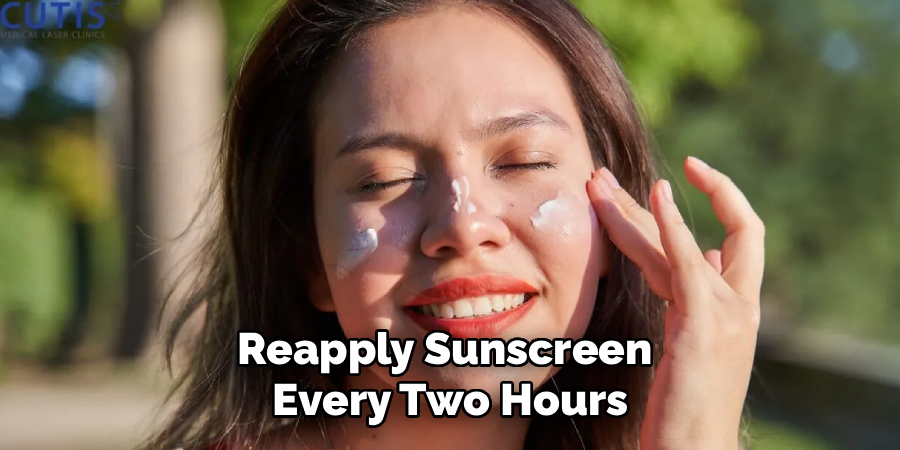
Tinted SPF and Visible Light
Regular SPF blocks most UV rays, but visible light—particularly blue light from the sun or even some screens—can also worsen pigmentation. Tinted sunscreens, which contain iron oxides, provide added protection against visible light. They’re especially recommended for people with melasma or sensitive skin who want an extra layer of defense.
How to Treat Dark Spots on Face: Step-by-Step Guide
Success in treating dark spots lies in a consistent, layered skincare routine. Here’s how to create an effective regimen that addresses the problem at every step:
Step 1: Cleanse and Prep Skin
Begin each morning and evening with a gentle, non-stripping cleanser. This removes excess oil, residual sunscreen, and pollutants without over-drying or irritating the skin. Prepping a fresh canvas helps maximize absorption of the brightening actives you’ll use next. Avoid harsh scrubs or physical exfoliants on pigmented areas—they can aggravate the skin and inadvertently worsen spots.
Step 2: Morning Antioxidants (Vitamin C)
After cleansing and before moisturizer, apply a vitamin C serum. Vitamin C is a potent antioxidant that interrupts pigment production and neutralizes free radicals generated by the sun and pollution. Look for stable forms of ascorbic acid or other derivatives formulated for your skin type. Consistent use brightens the skin overall, evens out tone, and boosts the effectiveness of your SPF.
Step 3: Daytime SPF and Tint
Once your Vitamin C serum has absorbed, layer on moisturizer and then sunscreen with at least SPF 30. If desired, select a tinted SPF for extra visible light protection and sheer coverage of spots. This helps camouflage uneven pigment during the day while actively preventing new discoloration.
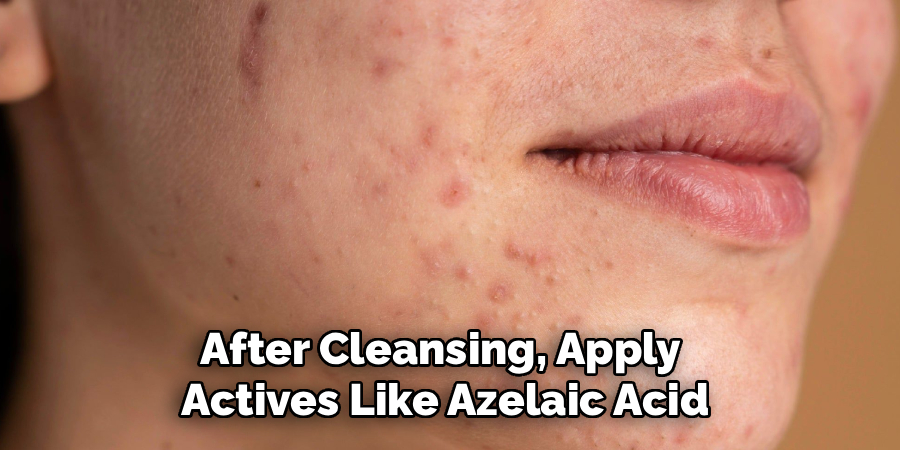
Step 4: Night Actives (Azelaic, Niacinamide, Retinoids)
Nighttime is ideal for introducing powerhouse ingredients that target pigment at its source. After cleansing, apply actives like azelaic acid (which quiets inflammation and brightens), niacinamide (which strengthens skin and reduces discoloration), or a gentle retinoid (which accelerates cellular turnover). Start slow and introduce only one new active at a time to reduce the risk of irritation. These ingredients can fade existing spots and prevent new ones from developing.
Step 5: Weekly Exfoliation (AHA/BHA)
Exfoliation helps remove dead, pigmented cells from the skin’s surface and allows active serums to penetrate better. Once or twice a week, use a mild chemical exfoliant—such as glycolic (AHA) or salicylic (BHA) acids. Avoid combining exfoliants with strong brightening agents on the same night, as this may increase sensitivity or irritation.
Actives That Work: What to Use and When
Choosing the right actives—and knowing when to deploy them—makes all the difference in fading dark spots efficiently while minimizing side effects.
Vitamin C and Antioxidant Pairing
Vitamin C is the cornerstone for brightening routines. Used in the morning, it pairs well with other antioxidants like ferulic acid or vitamin E, amplifying their effectiveness. Together, they guard against environmental triggers, help loosen existing pigment, and are safe for most skin types. Apply to clean, dry skin for best results and top with sunscreen to lock in benefits and defend against UV-triggered pigment.
Azelaic Acid and Niacinamide
Azelaic acid, found in both prescription and over-the-counter strengths, helps quiet inflammation and interrupts pigment production. It’s especially useful for individuals struggling with both acne and hyperpigmentation. Niacinamide is a form of vitamin B3 that improves skin barrier function, reduces redness, and gradually diminishes spots. Both can be incorporated into morning or evening routines and are less likely to irritate some stronger actives.
Retinoids and Exfoliating Acids
Retinoids—from over-the-counter retinol to prescription tretinoin—speed up cellular turnover, helping skin shed pigmented cells faster. Incorporate slowly, beginning two to three times a week, and build up as tolerated. Exfoliating acids (AHAs or BHAs) slough away dull surface skin, but they can be strong; avoid layering them with retinoids in the same routine unless directed by your dermatologist.
Layering, Cycling, and Sensitivity
Building an effective routine to treat dark spots on the face goes beyond simply applying potent ingredients—it’s all about using them intelligently to avoid irritation and setbacks.
Avoiding Irritation and Rebound Pigment
Many brightening actives can cause dryness, peeling, or sensitivity, especially when overused. Irritated skin is more prone to rebound hyperpigmentation, especially in medium to deep skin tones. The goal is slow, steady progress—always listen to your skin’s response and dial back frequency if you experience redness, burning, or peeling.
Buffering and Sandwich Techniques
To limit irritation, try “buffering” strong products: apply a thin layer of a gentle moisturizer before the active or mix the active serum with your moisturizer to dilute its potency. For retinoids, sandwiching means layering moisturizer before and after application. These methods help maintain the benefits while reducing the risk of side effects.
When to Pause or Scale Back
If you notice persistent redness, sensitivity, stinging, or more dark spots developing, hit pause. Give your skin a break from strong actives and focus on gentle cleansing, ample hydration, and, above all, diligent sun protection. Resume activities slowly, one at a time, once your skin has settled.
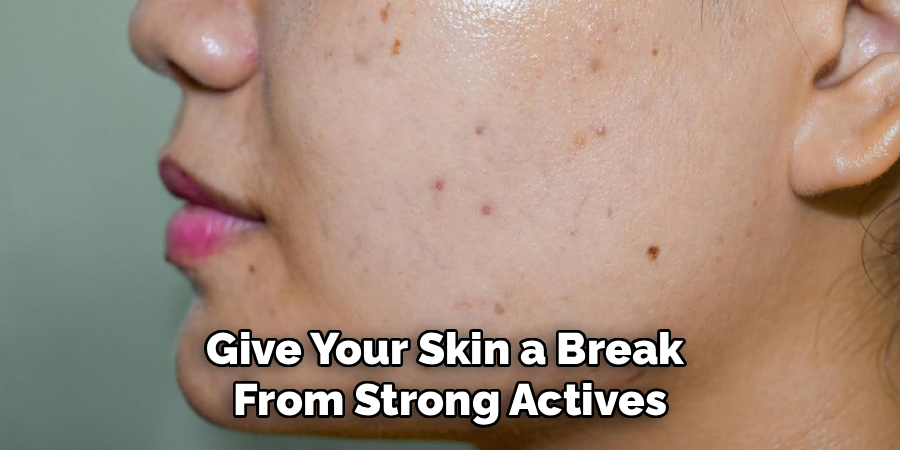
In-Office Options: What to Expect
Some dark spots prove stubborn despite optimal home care, or you may want faster, more dramatic results. In these cases, professional treatments can offer a safe, effective boost—but they come with their own considerations.
Chemical Peels and Microneedling
Chemical peels range from mild alpha hydroxy acid (AHA) peels to stronger blends. They exfoliate the uppermost layers of skin, revealing fresher, less pigmented cells beneath. Multiple sessions spaced weeks apart yield the best results, and some downtime—like redness or peeling—should be expected. Microneedling, meanwhile, uses fine needles to create micro-injuries that stimulate skin renewal and improve penetration of topical lighteners.
Lasers and Energy Devices
Lasers such as Q-switched, Pico, or fractional lasers can deliver heat directly to pigment, breaking it up for the body to remove. Intense pulsed light (IPL) devices can also treat generalized sun damage. These options often involve more downtime and strict post-procedure sun avoidance, but can visibly lighten stubborn spots with just a few sessions.
Downtime and Maintenance
No professional procedure is one-and-done. Aftercare is crucial: this means extra sun protection, gentle cleansing, and avoiding aggressive activities until your provider gives the green light. Maintenance treatments or periodic touch-ups may be needed, especially for conditions like melasma.
Timelines, Plateaus, and Expectations
Patience is your friend when it comes to fading dark spots. Understanding typical timelines and learning how to navigate slow progress will keep you motivated and realistic.
How Long Until Results
Most active skincare routines take 8 to 12 weeks to show significant fading of dark spots. Professional options may provide more rapid, dramatic changes, but consistent home care is still essential to maintain improvements.
Managing Plateaus
Even with a solid routine, you might hit a plateau where progress stalls. Don’t rush to add new products—sometimes a gentle tweak, such as cycling in a new antioxidant or increasing exfoliation frequency, can help. If there’s still no progress after several months, consult a dermatologist.
Preventing Re-Darkening
Once you’ve lightened existing spots, the focus shifts to prevention. Any lapse in sun protection or overuse of irritating actives can cause spots to return or worsen. Stick to your core routine and remain vigilant with SPF, especially during outdoor activities.
Common Mistakes and Fixes
Treating dark spots is a journey with potential pitfalls. Awareness of common mistakes helps avoid setbacks and supports long-term skin health.
Skipping SPF or Inconsistent Use
No skincare product can outwork daily, diligent sunscreen use. Inconsistent application, using too little, or forgetting reapplication, leaves skin vulnerable to further pigmentation. Make SPF a habit as ingrained as toothbrushing.
Over-Exfoliating or Mixing Too Much
Using multiple brightening products at once or applying exfoliants too frequently leads to irritation, peeling, and increased pigmentation risk. Stick to a schedule: exfoliate once or twice a week, and introduce new activities gradually.
Picking or Popping Lesions
Picking at acne, scabs, or dark spots not only risks infection but can deepen discoloration. Allow blemishes and marks to heal naturally, supporting the process with gentle care and patience.
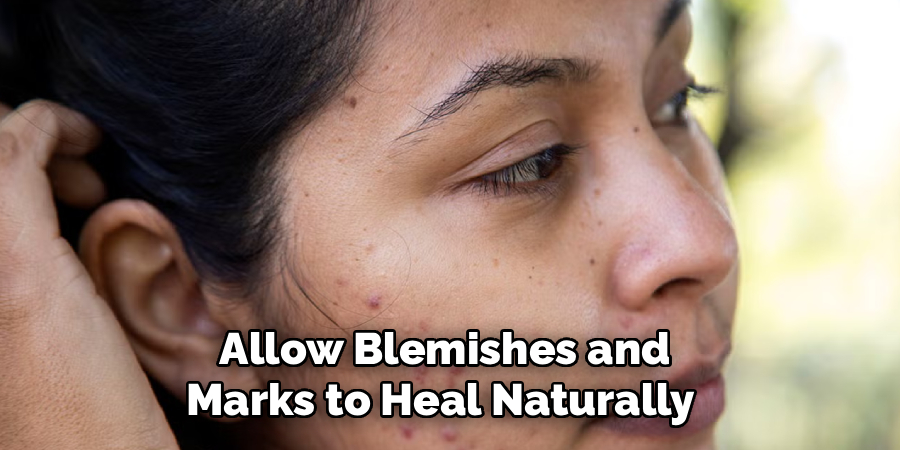
Conclusion
Clearer, more radiant skin is well within reach when you take a mindful, evidence-based approach to how to treat dark spots on face. Pairing daily sunscreen habits with targeted actives, smart layering, and the occasional help of a skincare professional, you can gradually fade stubborn spots and prevent new ones from forming. Remember: the most important ingredient for success is consistency. Focus on gentle, sun-safe routines, listen to your skin’s needs, and celebrate progress along the way. Your commitment today is the brightest step toward healthier, more even-toned skin tomorrow.
About the Author
Jane Hubbard is a passionate beauty expert with a wealth of experience in makeup, hair, and overall beauty techniques. After years of working as a hairdresser specialist, she followed her entrepreneurial spirit and started her own consultancy business.
Jane has always been driven by her desire to help others feel confident in their own skin, and she does this by sharing her knowledge, experiences, and practical beauty tips. Through her consultancy, she empowers individuals to embrace their unique beauty, offering tailored guidance that boosts both self-esteem and personal style.
Professional Focus
- Specializes in makeup, hairstyling, and beauty consulting.
- Provides personalized beauty advice, tips, and techniques to help individuals feel confident in their appearance.
- Dedicated to staying up-to-date with the latest industry trends and developments.
- Passionate about creating a comfortable and empowering experience for every client.
Education History
- University of Craft and Design – Bachelor of Fine Arts (BFA) in Woodworking and Furniture Design
- Woodworking Apprenticeships – Extensive hands-on training with skilled craftsmen to refine carpentry and furniture making techniques
- Online Courses & Masterclasses – Continued education in advanced woodworking techniques, design principles, and specialized tools
Expertise:
- Makeup artistry, hairstyling, and beauty consulting.
- Personalized beauty techniques to enhance confidence and self-expression.
- Educating clients on how to maintain their beauty routines at home.
